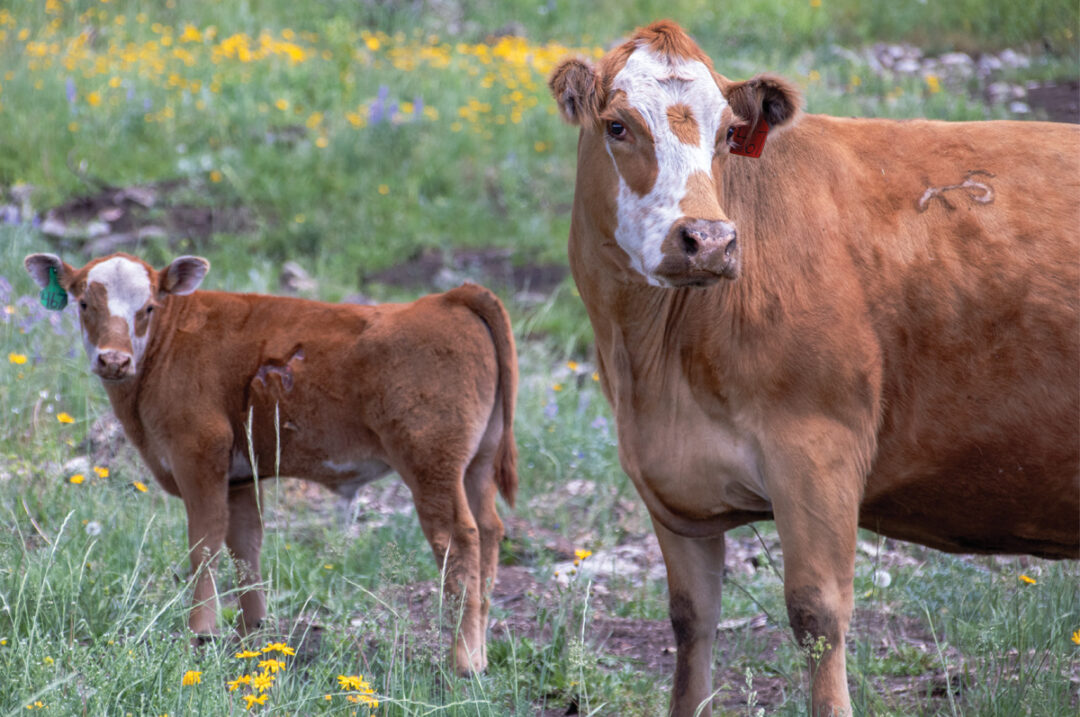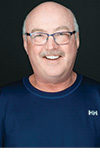Cattle producers select their breeding stock variably, using an assessment of parentage production, price, expected progeny differences (EPDs), genetic testing or a simple eyeball test. A few swear by the oft-forgotten linear measurements, which gauge numerous body parts with uniquely designed calipers.
Accepted linear measurements for cows include:
- Rump length (from rump to hip): Ideally 38% to 40% of body length
- Rump width: A minimum of 2.5 inches wider than the rump length at 1 year
- Rump height: Approximately 48 inches (recommended)
- Body length: Measured from between the shoulder blades to the rump
- Neck length (from the body measurement point to the poll): Should be half the body length or one-third the topline
- Shoulder width: Should be equal to rump length at minimum
- Heart girth: Equal to or greater than the topline
- Flank: Should be 2 to 10 inches larger than the heart girth
Linking animals to their environment
Steve Campbell, owner of Tailor Made Cattle, says the best way to use linear measures is to find the animals that work the best in their environment.
“They’ll shed early, are low maintenance and have a calf every year up to 12 years old,” he says.
He cautions that variability occurs depending on location, climate and other conditions.
“The 10 percent of a herd working well at a certain ZIP code depends on elevation, rainfall and location,” he says. “There's a lot of variability between those taking two or 20 acres to run a cow.”
Campbell explains that once optimal animals are identified, a desired standard of topline, body and rump length, shoulder width, girth and flank can be developed.
“Three commonalities with cows having 10 or 11 calves in a row in every environment are a bigger belly for optimal digestion, a wider butt for calving ease and fleshing, and a good slope from hooks to pins,” he says.
Campbell believes linear measuring is relevant to all breeds and locations.
“When it comes down to it, ranchers sell grass,” he stresses. “When we achieve cattle adapted to an environment, those are the ones to work in our ZIP code.”
Optimizing the numbers
Ken Redman, arguably the world’s leading linear measurement advocate, assessed more than 9,500 cattle during his career. In a recent episode of the Working Cows podcast with host Clay Conry, Redman said, “Linear measures are simply a measure. It’s not unusual to see how tall, long, wide and big around an animal is. It’s what we do with it that’s important.”
He added that weigh scales are easy, accurate and acceptable for calculating size, while linear measurements communicate the most information related specifically to feed efficiency, calving and reproductive efficiency traits.
“Of the three phenotype components – genetics, management and the environment – the one often left out is management, as everyone has a different philosophy and resources,” Redman said. “Length, height, width and circumference are traits to change a herd quickly. When using them, one animal [the bull] can influence anywhere from 30 to 50 calves yearly.”
Operations with abundant resources will favor larger cattle, but limits must be accounted for.
“If we have an engine [or animal] with the potential to produce 100 horsepower and another 400 horsepower, when we give them all the fuel they can use, we’re more efficient with the 400 horsepower,” he said. “But, if we limit the fuel to where it'll only produce 100 horsepower, then the smaller engine is 10 times more efficient than the larger one.”
Redman likes to see a lot of flank relative to heart girth. His single most valuable trait is the side triangle, beginning with a deeper and thicker back end, a line to behind the shoulder or brisket, and down to the navel, creating a lower triangle.
“Those numbers offer the highest correlation to productivity in a cow if we measured everything: reproduction, milk and growth,” he said.
Balancing the selection approach
Kelli Retallick, president of Angus Genetics Inc., believes genetic selection needs to include a balanced approach, especially when considering the traditional eyeball test and breeding correctly for soundness, feet and other management convenience traits.
“Normally, we tackle this with visual appraisal to see what’s on the outside, followed by genetic tools to help us understand what’s under the hide and determine whether an animal will pass their qualities to the next generation,” Retallick says.
Regardless of selection methods, Retallick emphasizes the need to create a clear objective. If a market is known, reproductive objectives can be shaped around this knowledge.
“The biggest thing is, once the objective and plan are made, stick to them,” she stresses. “Analyzing results makes it much easier to create the shifts necessary to drive success.”
Retallick admits plans and paths to desired goals vary widely. Ensuring producers know their market and customer base helps align goals and criteria for seedstock and commercial operations.
Seedstock breeders widely use EPD tools to market and select their stock, driving their objectives. DNA testing has expanded as its data helps create more accurate predictions on young sires and females without progeny.
“With a genomic test, we’re increasing the accuracy level around our young animals, which lets commercial producers buy with more confidence,” Retallick says. “It’s where the rubber meets the road in genetic testing.”
Retallick hopes the selection toolkit continues to expand, particularly around maternal traits, as they’re less heritable and harder to pass on.
“As breeders and geneticists, we continue to look at what collectable phenotypes will help us predict longevity, fertility and how well females will breed back,” she says. “These are huge economic drivers.”
She points to an Angus-created “Hair Shedding” EPD, originally defined to tackle specific environmental issues. The American Angus Association’s Pulmonary Arterial Pressure (PAP) EPD is another example aimed at assisting with high-elevation operations. Feedlot heart failures are also being targeted.
“For producers successfully using methods like linear measurements, I’d ask them to add the possibilities of combining them with genetic selection,” Retallick says. “What aspects would add value to their herd? It would be interesting to layer on traits such as docility and performance alongside our genetic selection tools and determine how they can increase the rate of progress.”









